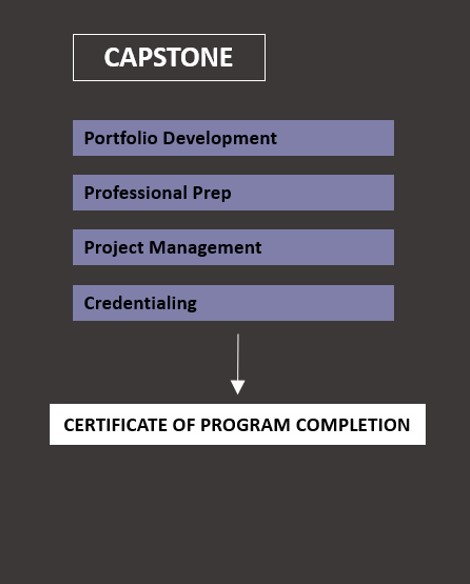Curriculum
Instead of the standard collegiate curricula that require an extensive list of courses taken outside the major (often having no connection to each other), the PABD curriculum is project-based, centered around solving real-life design problems where students can immediately apply the skills they are learning in their coursework.
And because interior design, architecture, and construction courses are integrated in the curriculum, the PABD program also allows for students to take courses outside of their specific disciplinary track, based on their interest. (For example, an architect may opt to take a course on lighting, or an interior designer can take a course in construction fabrication.) Since many of the courses are shared between the three fields, it is also very easy for students to change disciplinary tracks if they wish, without having to start the program from the beginning.
The PABD curriculum for both Interior Design and Architecture consists of a Foundation package to establish basic skills in design, four Levels of project-based study, and a Capstone package that prepares the student to embark on professional practice.
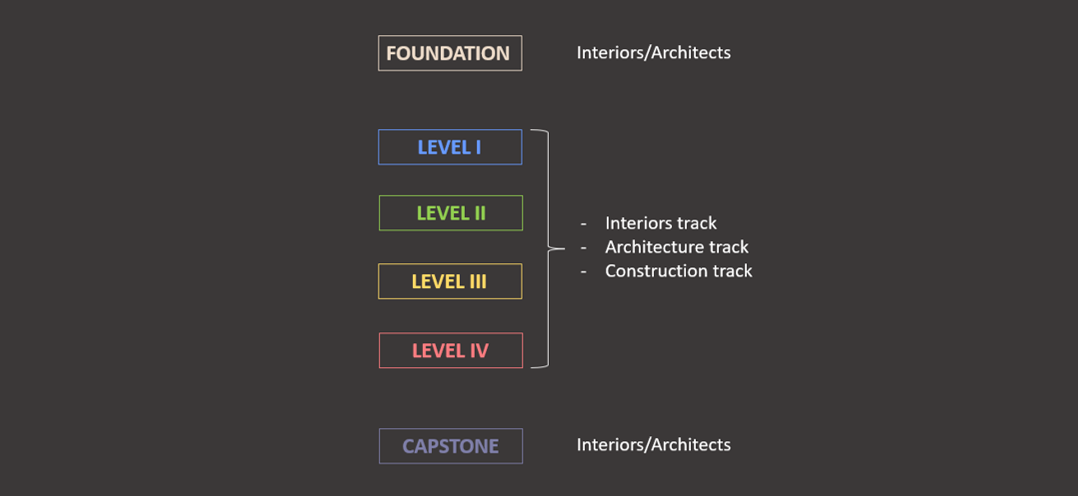
The Foundation package gives beginning students an introduction to basic design principles and methods, after which they are ready to choose their specific disciplinary track in either Interior Design or Architecture.
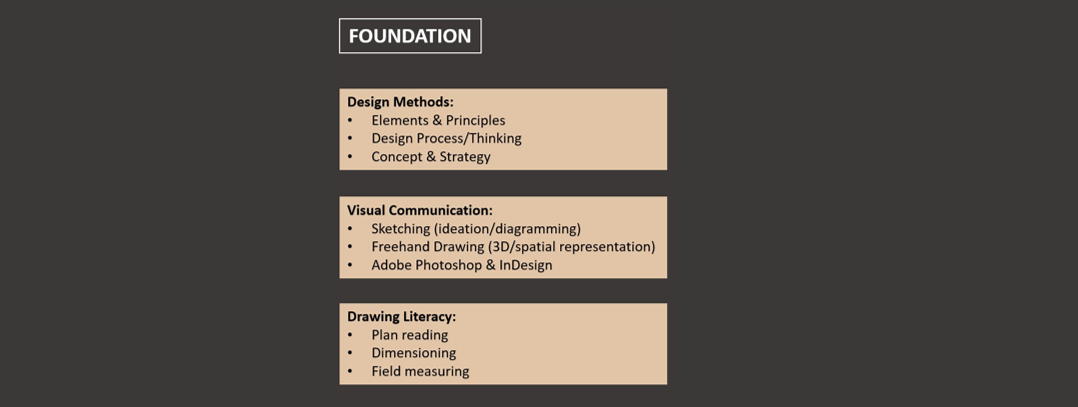
The PABD curriculum has a different thematic emphasis embedded in its courses at each of the four levels (unlike most conventional academic programs which have separate liberal arts course requirements). The creative focus (Level I) integrates artistic and visual expression, the technical focus (Level II) integrates quantitative skills and reasoning, the humanistic focus (Level III) integrates psychological and social perspectives, and the professional focus (Level IV) integrates business thinking and practices.
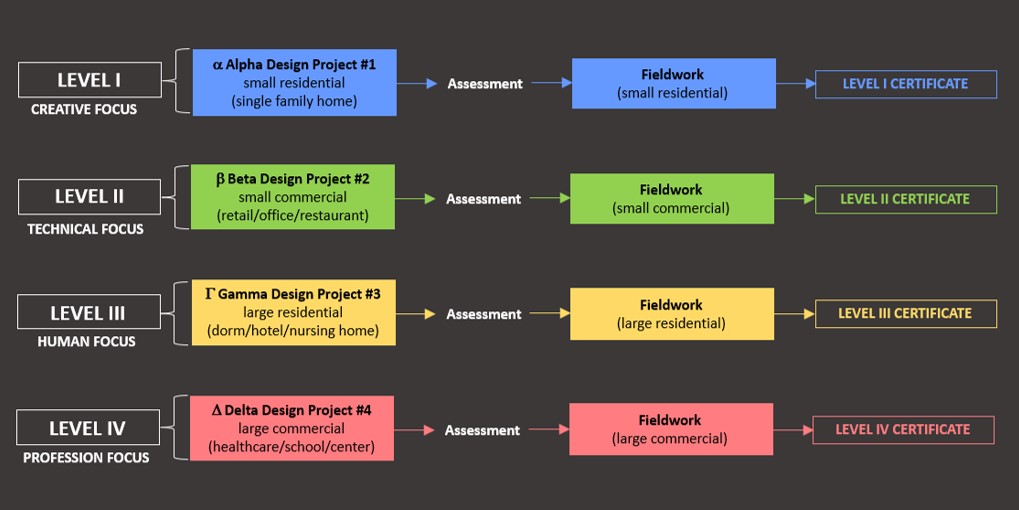
Each level consists of a comprehensive Design Project (focusing on a different building typology), project-related Support Courses (for students to acquire the knowledge and skills they need to execute the project), and a Fieldwork component (where they can apply in a real-life setting what they have just learned).
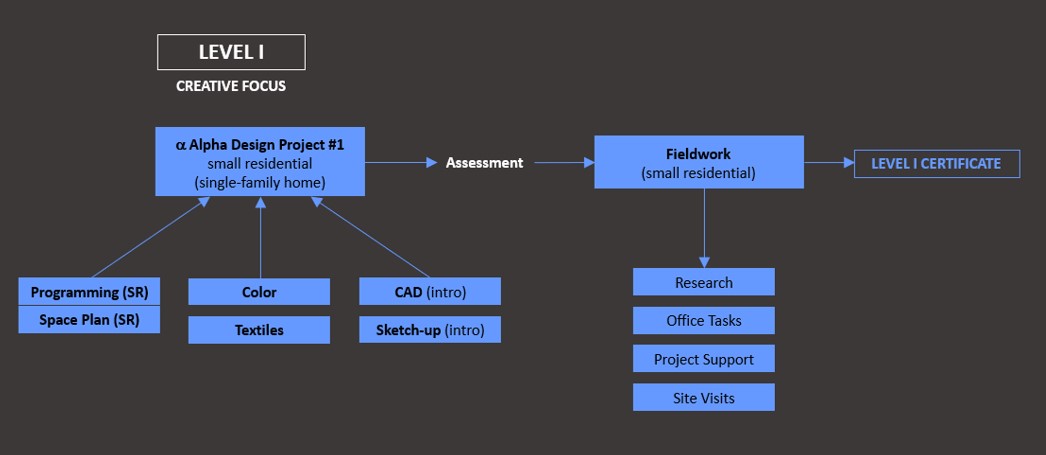
Each successive level is built on a progressive layering of previous knowledge and skill sets that are utilized simultaneously. The Design Project is the culmination of everything that the student has learned at each level.
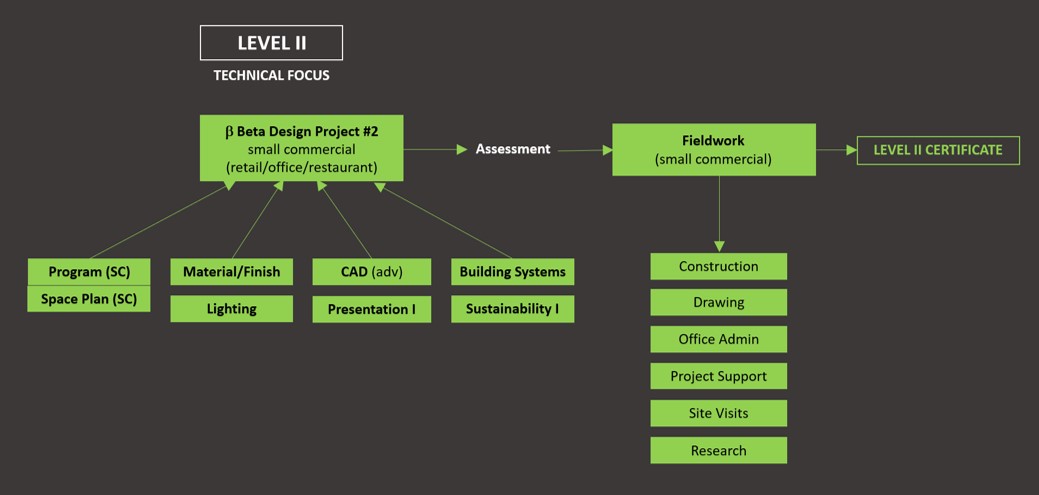
Once students have demonstrated the technical proficiency necessary for application in professional practice, they then engage in level-appropriate Fieldwork—collaborating with design professionals and other students on actual projects in real time. Upon completing their Fieldwork component, students are then ready to move to the next level.
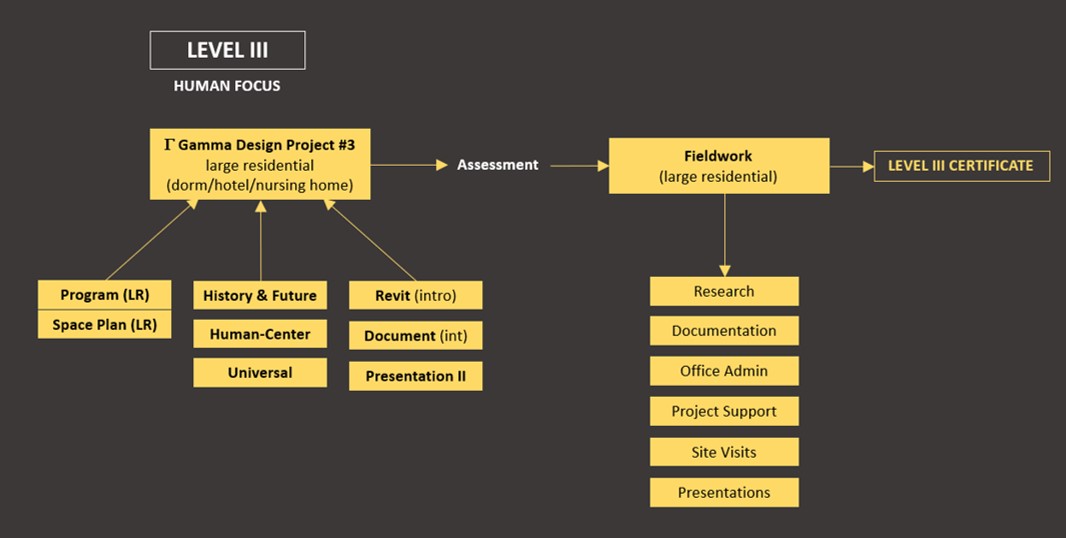
Fieldwork assignments after Level I will be monetarily compensated, as well as count towards qualification for professional credentialing exams.
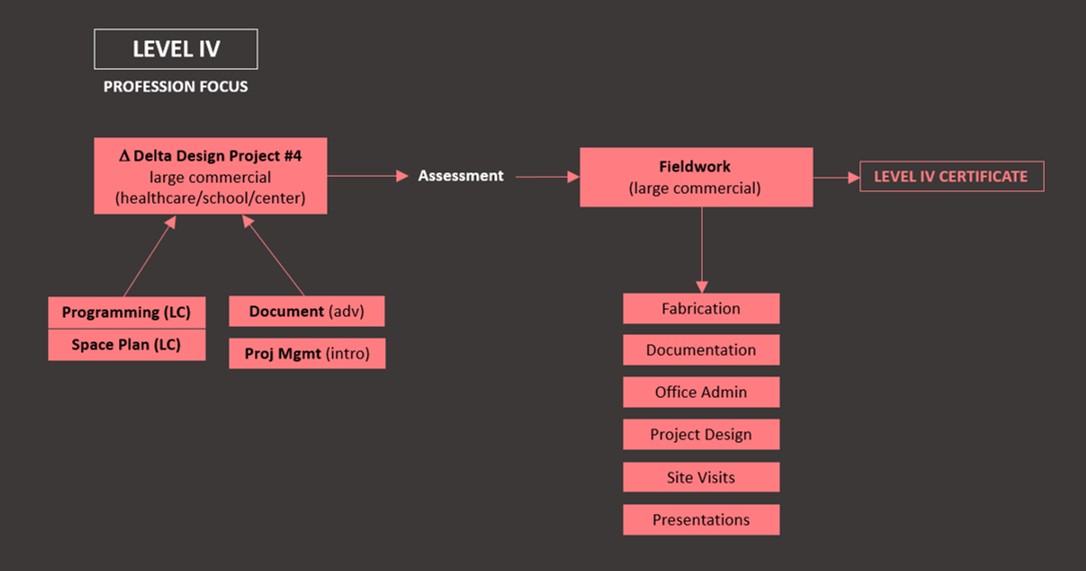
Once all four levels have been successfully completed, students then proceed to the Capstone package that will help them prepare to transition to professional practice.
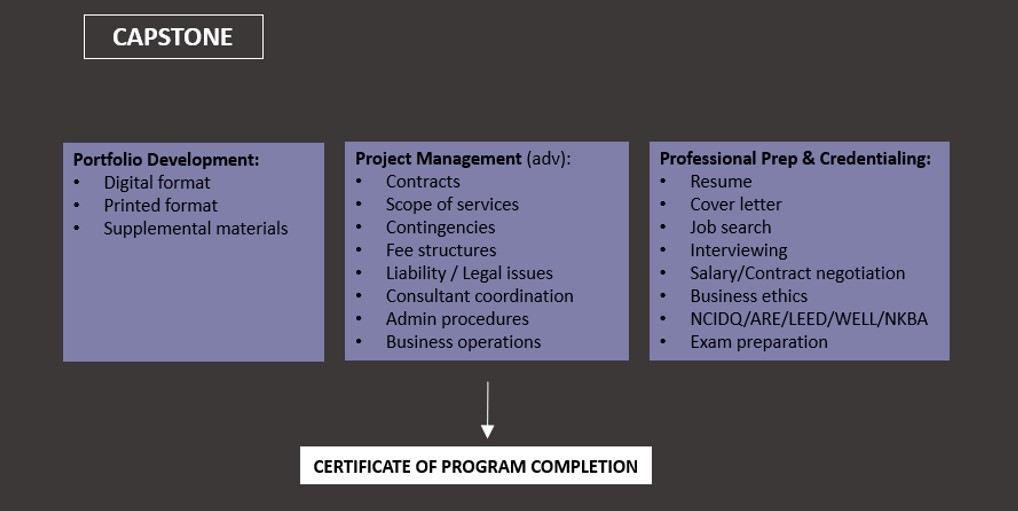
Curriculum
Instead of the standard collegiate curricula that require an extensive list of courses taken outside the major (often having no connection to each other), the PABD curriculum is project-based, centered around solving real-life design problems where students can immediately apply the skills they are learning in their coursework.
And because interior design, architecture, and construction courses are integrated in the curriculum, the PABD program also allows for students to take courses outside of their specific disciplinary track, based on their interest. (For example, an architect may opt to take a course on lighting, or an interior designer can take a course in construction fabrication.) Since many of the courses are shared between the three fields, it is also very easy for students to change disciplinary tracks if they wish, without having to start the program from the beginning.
The PABD curriculum for both Interior Design and Architecture consists of a Foundation package to establish basic skills in design, four Levels of project-based study, and a Capstone package that prepares the student to embark on professional practice.

The Foundation package gives beginning students an introduction to basic design principles and methods, after which they are ready to choose their specific disciplinary track in either Interior Design or Architecture.

Each level consists of a comprehensive Design Project (focusing on a different building typology), project-related Support Courses (for students to acquire the knowledge and skills they need to execute the project), and a Fieldwork component (where they can apply in a real-life setting what they have just learned).

The PABD curriculum has a different thematic emphasis embedded in its courses at each of the four levels (unlike most conventional academic programs which have separate liberal arts course requirements). The creative focus (Level I) integrates artistic and visual expression, the technical focus (Level II) integrates quantitative skills and reasoning, the humanistic focus (Level III) integrates psychological and social perspectives, and the professional focus (Level IV) integrates business thinking and practices.
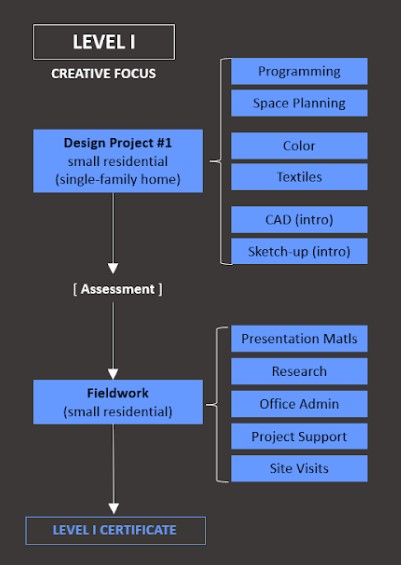
Each successive level is built on a progressive layering of previous knowledge and skill sets that are utilized simultaneously. The Design Project is the culmination of everything that the student has learned at each level.
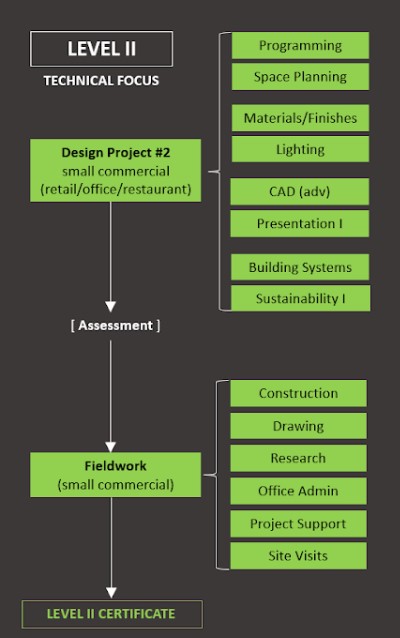
Once students have demonstrated the technical proficiency necessary for application in professional practice, they then engage in level-appropriate Fieldwork—collaborating with design professionals and other students on actual projects in real time. Upon completing their Fieldwork component, students are then ready to move to the next level.
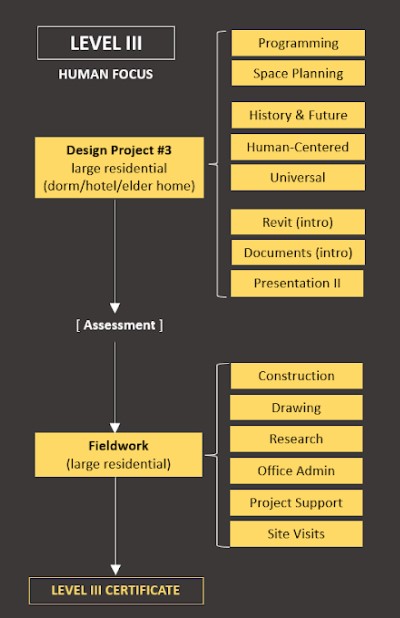
Fieldwork assignments after Level I will be monetarily compensated, as well as count towards qualification for professional credentialing exams.
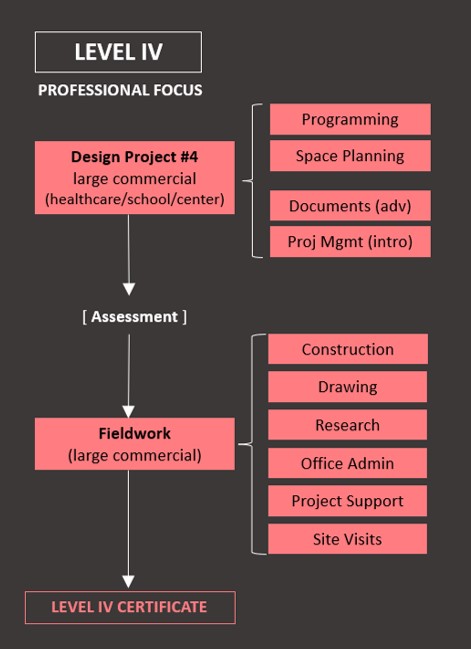
Once all four levels have been successfully completed, students then proceed to the Capstone package that will help them prepare to transition to professional practice.
